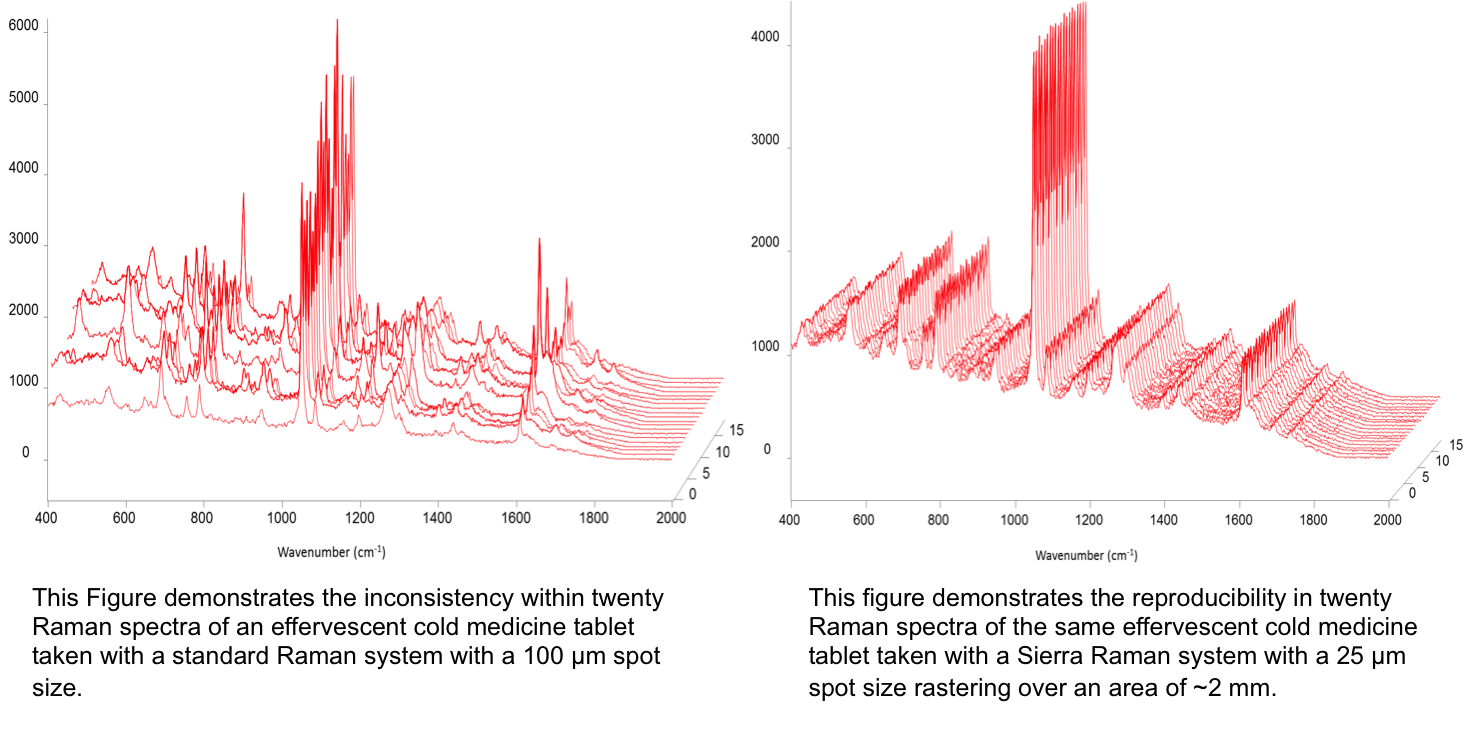Infrared (MIR and NIR) equipment have been the mainstay methods for testing of incoming raw materials an the verification of final release products requires more stringent methods carried out by skilled analytical chemists who perform extraction procedures and analyze compounds using complex and time consuming techniques like wet chemistry titrations, liquids chromatography, dissolution testing and mass spectrometry. Since 100 % validation is being encouraged by the FDA, the size, speed, and cost prohibit the latter methods from meeting this standard. Only secondary test methods like NIR, MIR and Raman have the rapid and certified test capabilities needed to meet these requirements. US Pharmacopeia General Chapter <1120> recognizes Raman Spectroscopy as one of the accepted technologies for material identity verification, asserting that “Since the Raman spectrum is specific for a given compound, qualitative Raman measurements may be used as a compendia ID test, as well as for structural elucidation”. The FDA requires a rigorous authorization of signatures on all data, and handheld Raman manufacturers are required to follow 21 CFR part 11 which sets forth the criteria for electronic records, and signatures so that they are reliable, trustworthy and generally equivalent to paper records and handwritten signatures.
Raman is complimentary to NIR and MIR, and the development of portable and handheld Raman devices with their lower costs, size and libraries has made it more widely used. Various types of multivariate algorithms are used for pharmaceutical analysis. While the testing of incoming raw material is the prevalent application, pharmaceutical manufacturers are using handheld Raman to test the authenticity of finished products, and identify counterfeit products in the field.
In the laboratory, Raman microscopes with advanced confocal and imaging systems and can measure the distribution of active ingredients in tablets and capsules. Another popular application is the analysis of polymorphs in various ingredients. The figure below illustrates the unmatched reproducibility obtained with ORS. To read more about this application download the white paper here.

For more information on pharmaceutical applications please contact our partner Metrohm.